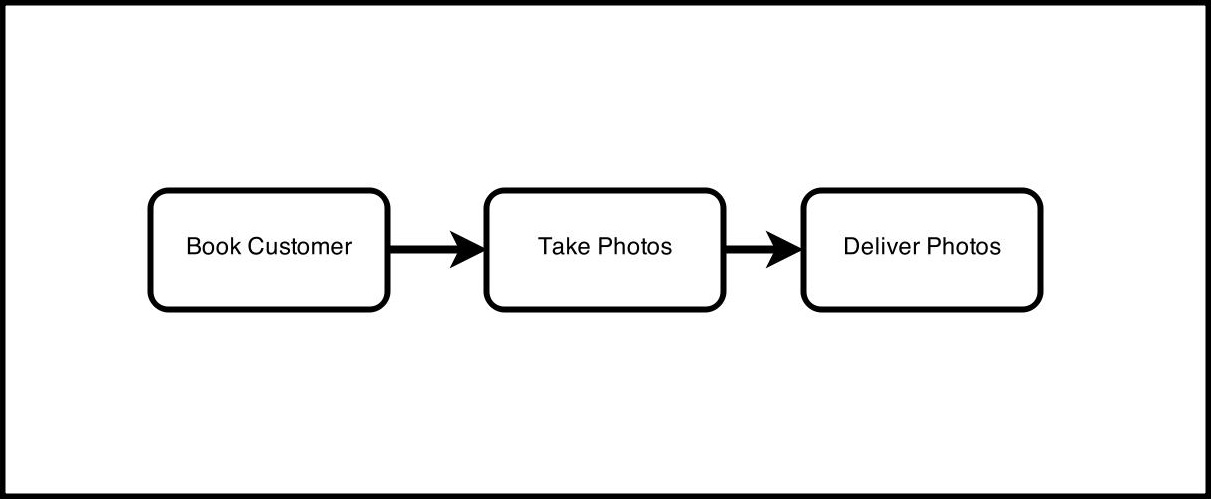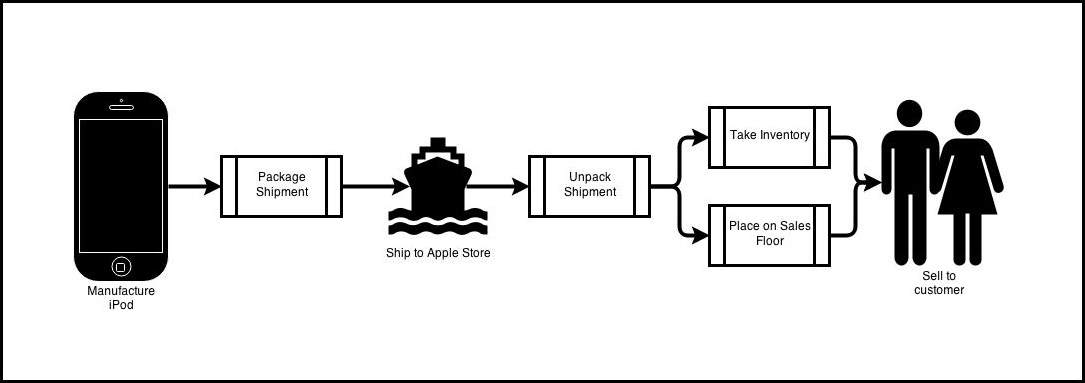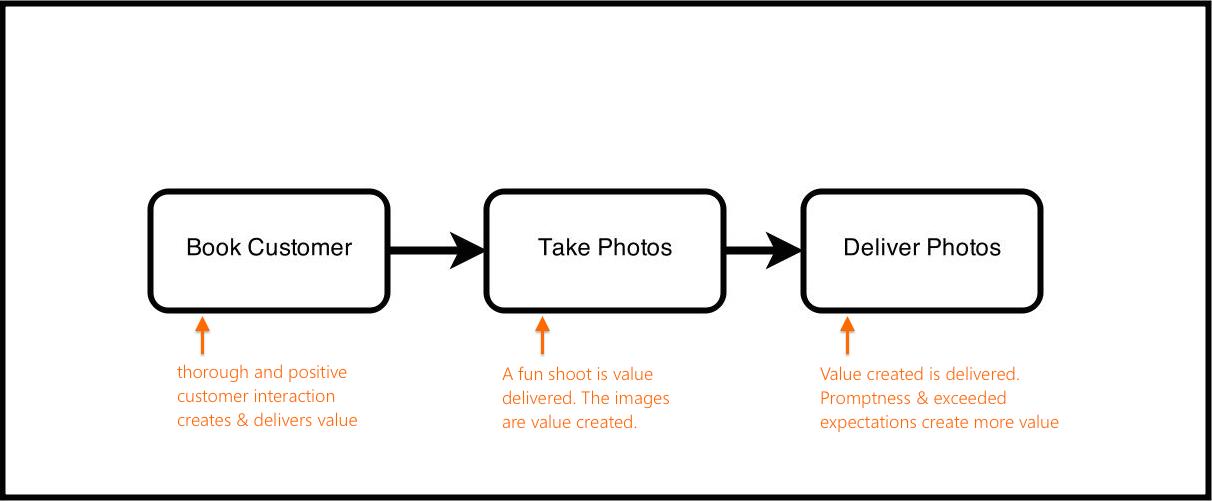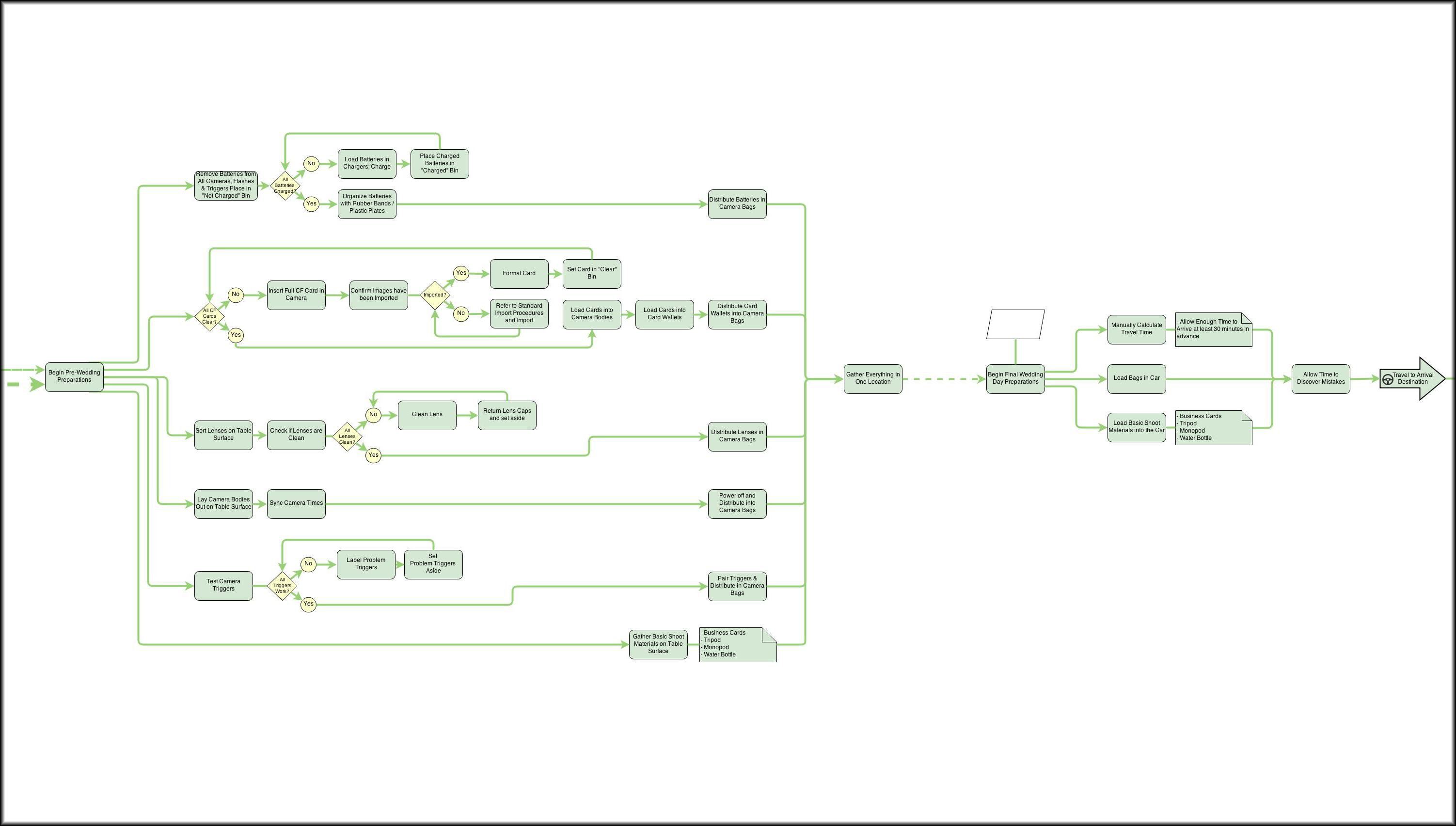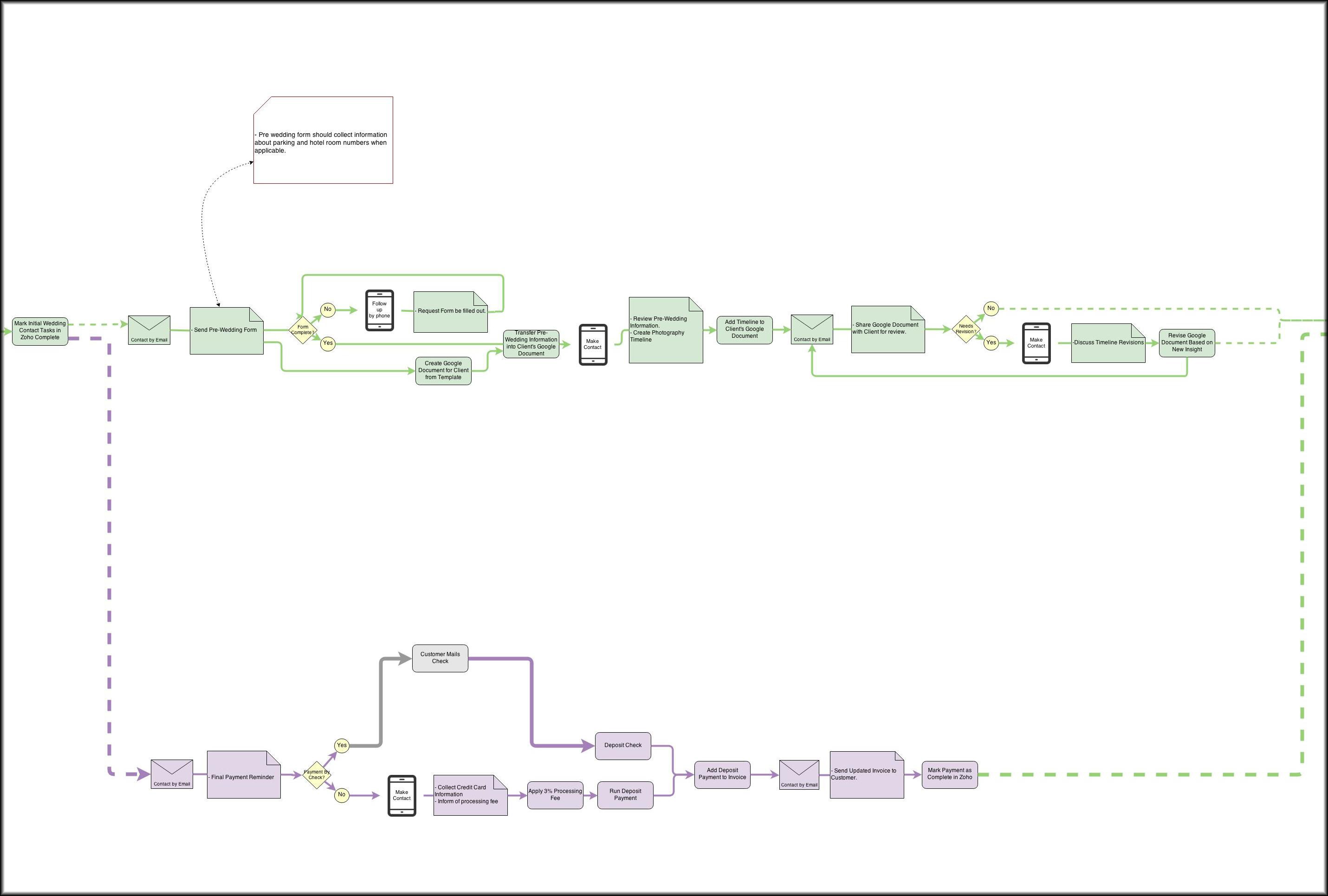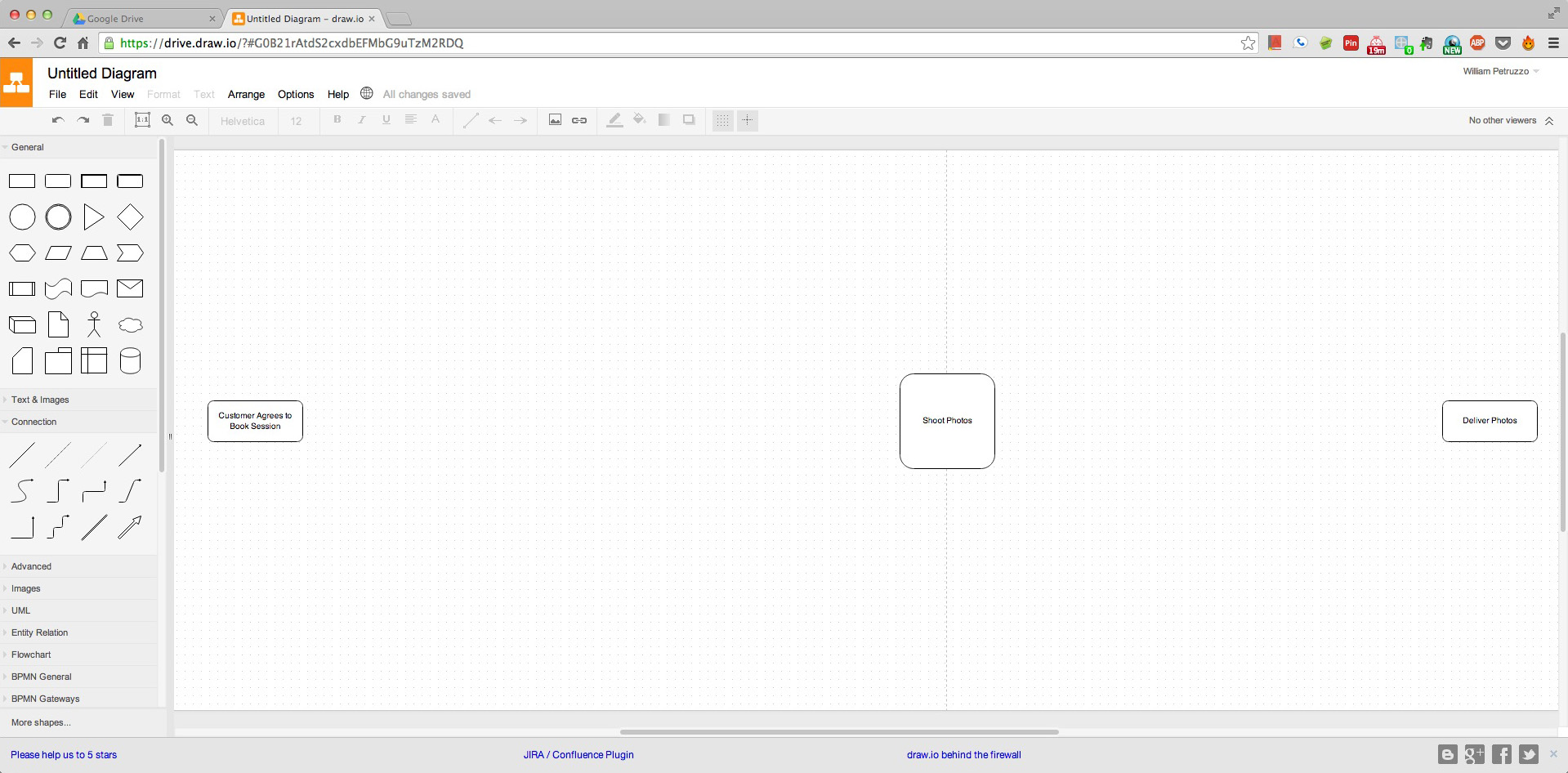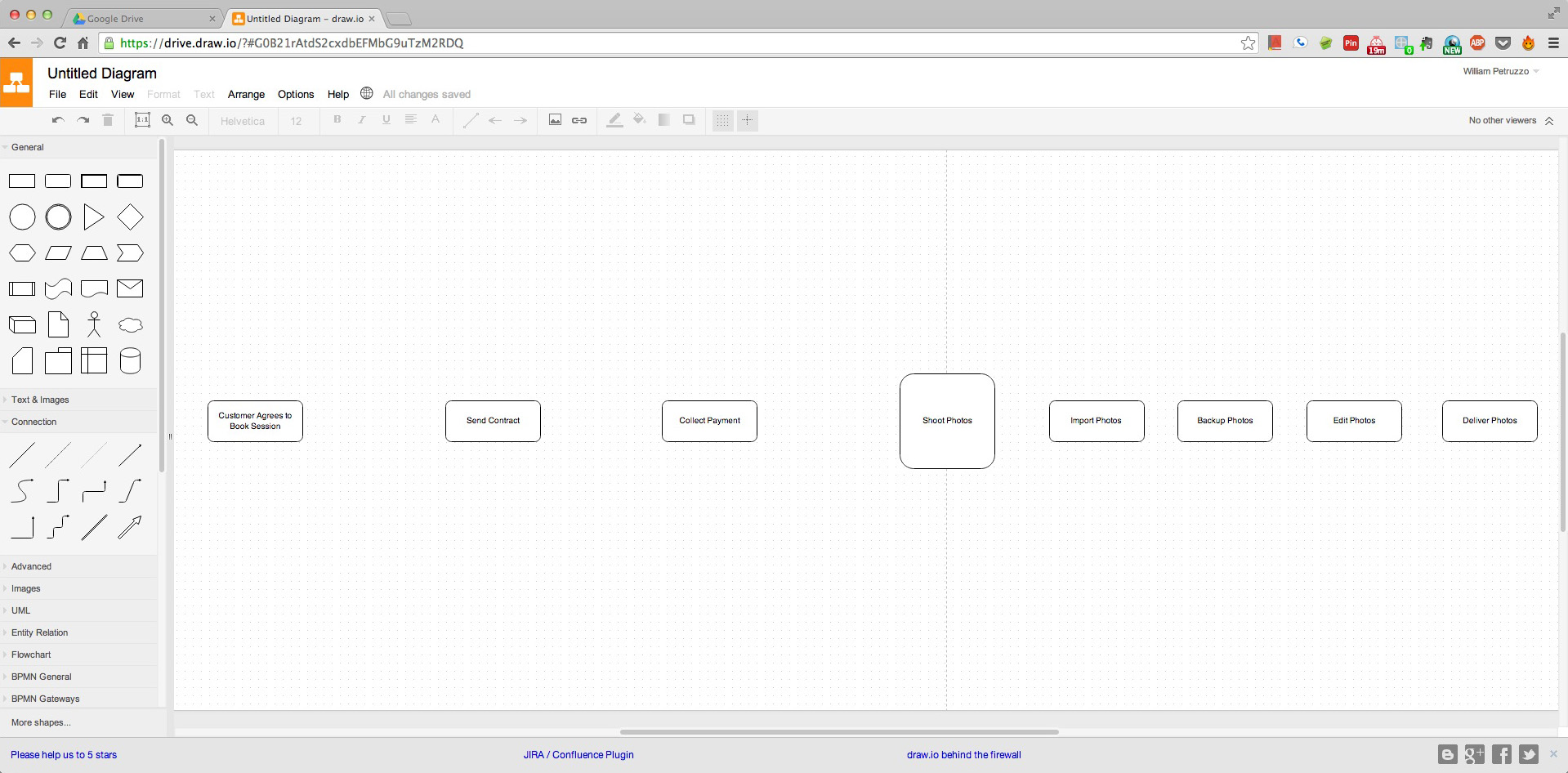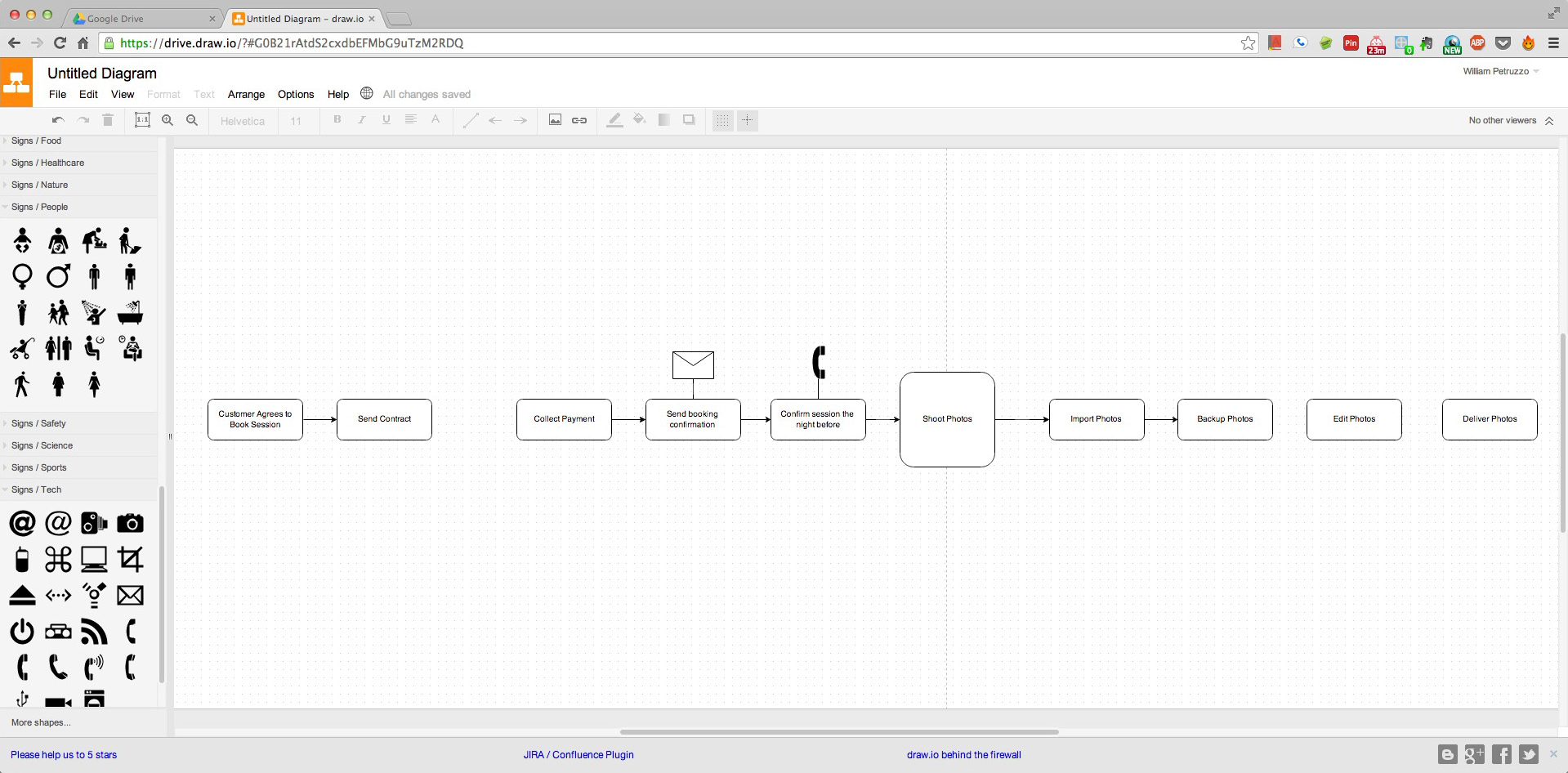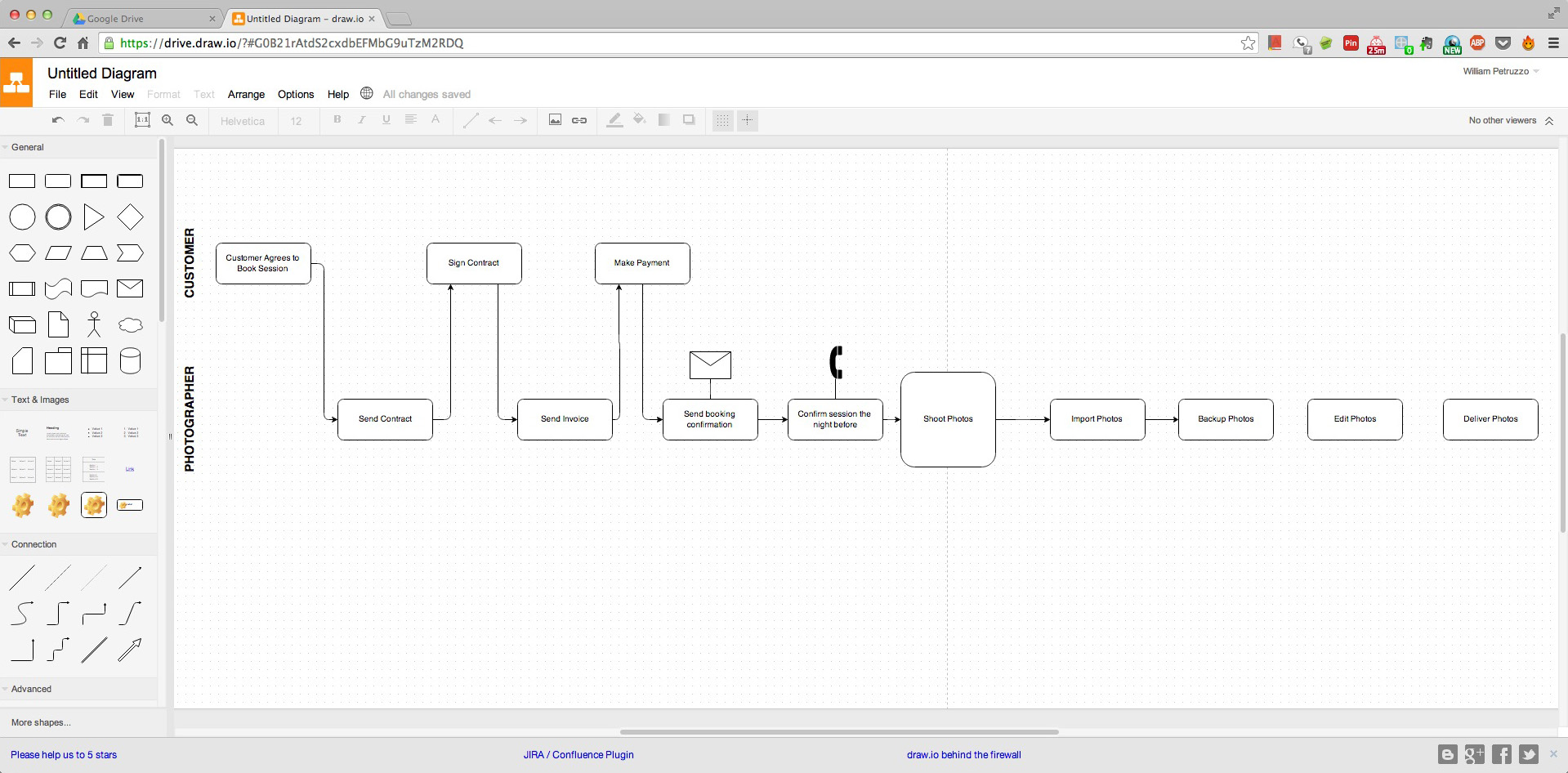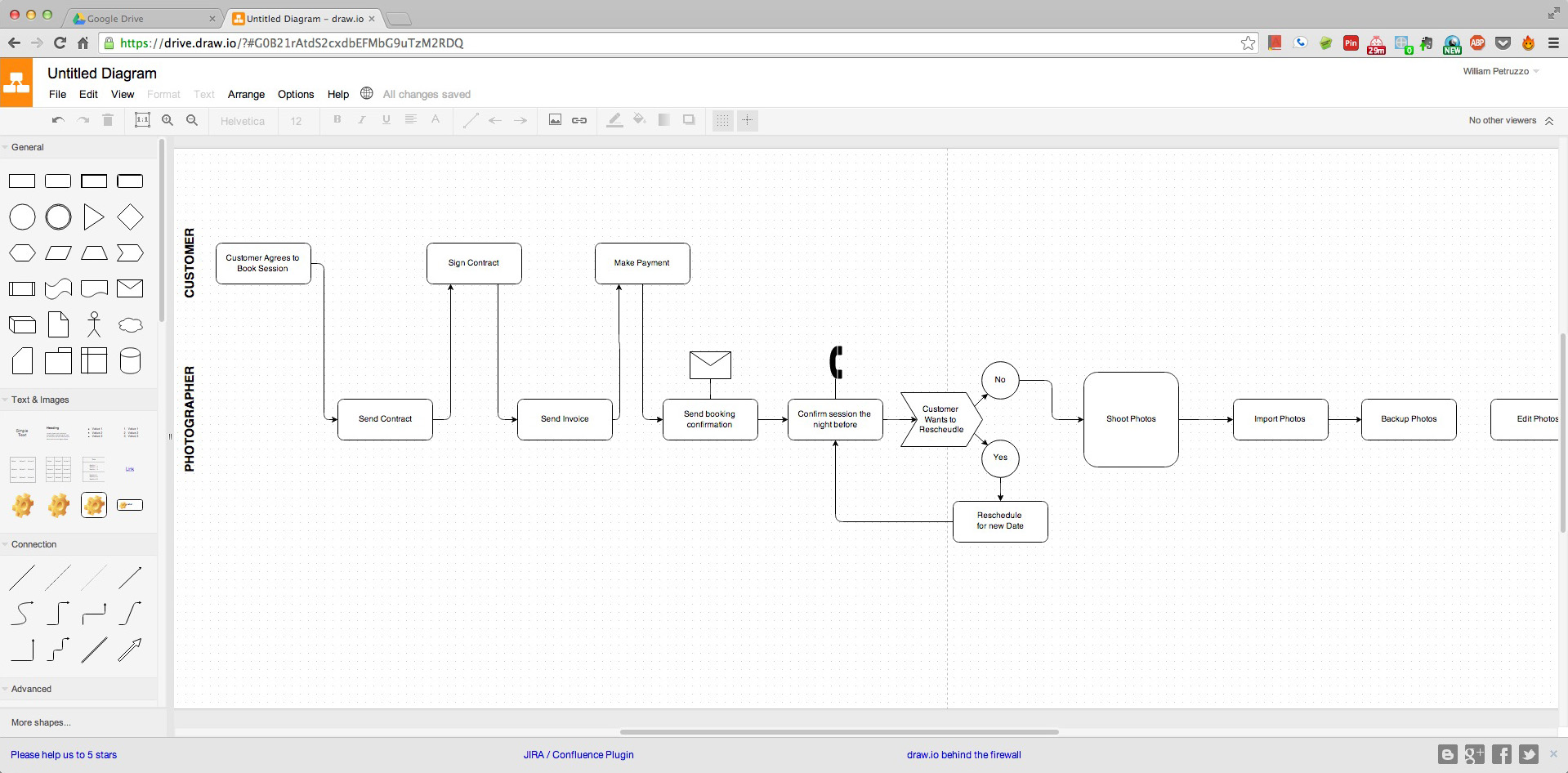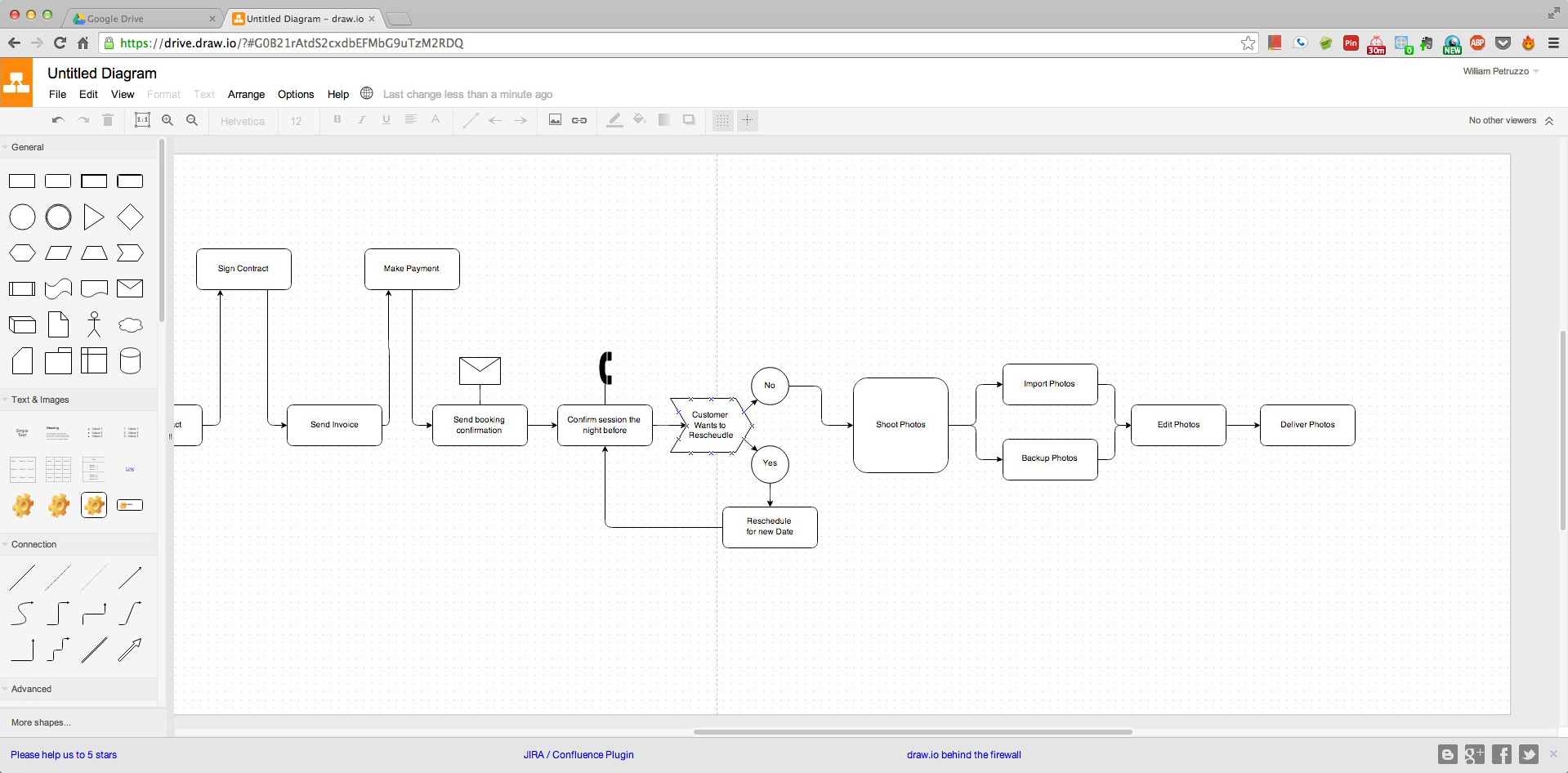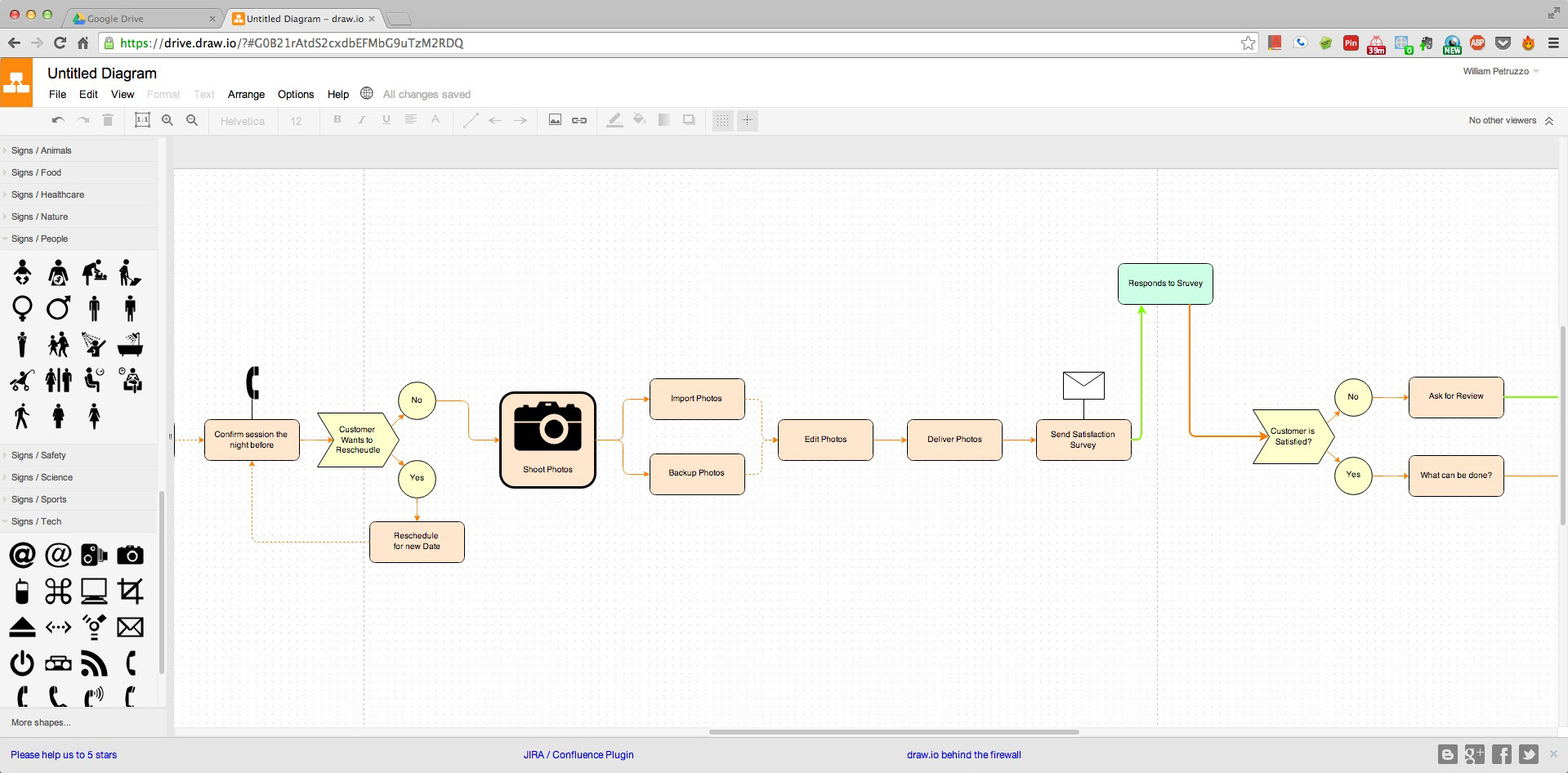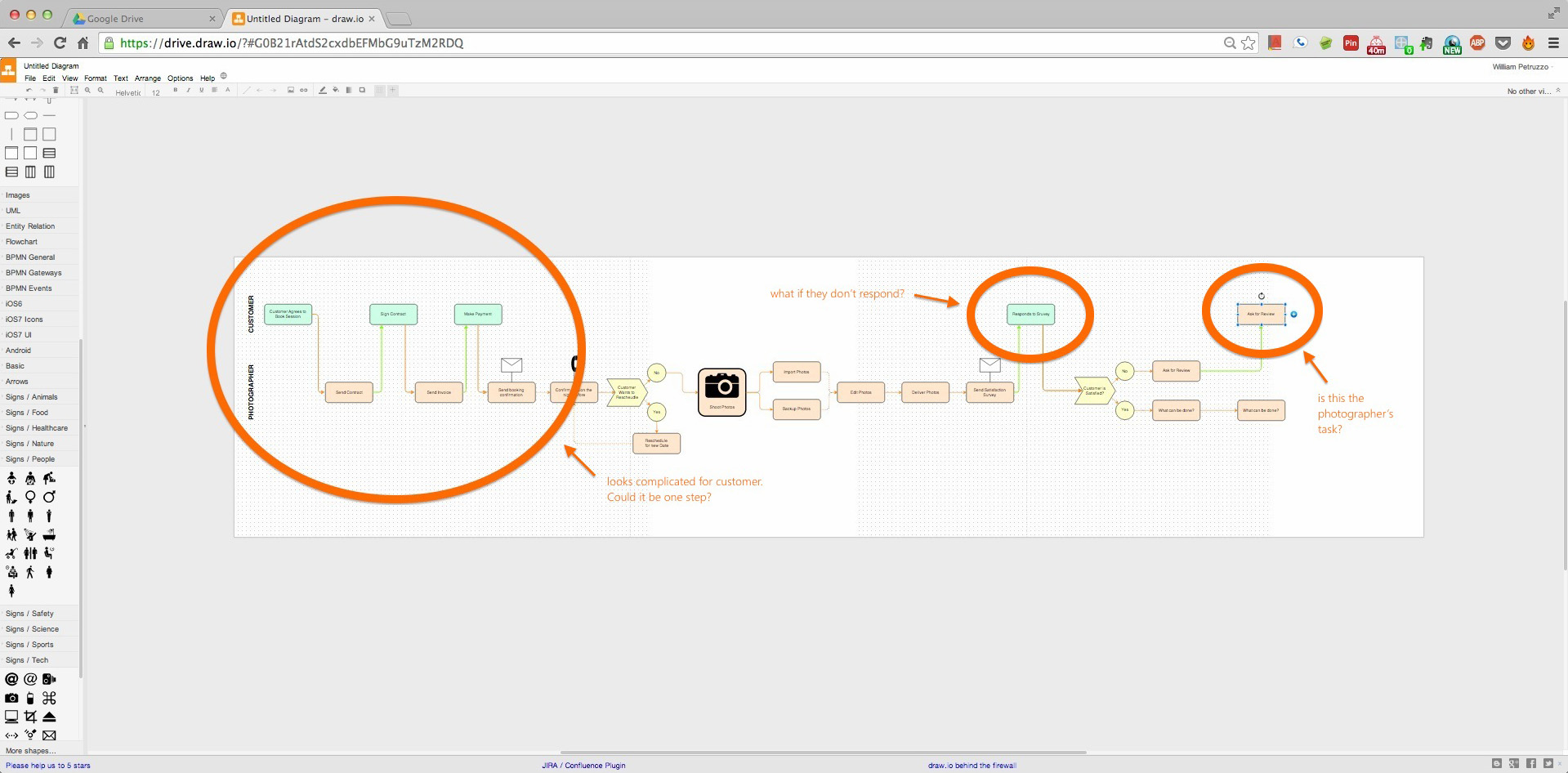When you first open the doors for business and start offering your photography services to friends of friends and strangers, people you don't personally know, it’s easy to quickly feel bewildered. It might hit you all at once that these people really have no reason to cut you slack. Suddenly you feel how important it is to have your oats in a row. Or maybe you don’t feel that way. But you know what comes from neatly organized oats? The confidence to make quick, decisive and accurate decisions. Something that all great businesses do–and a lot of photography business don't.
So, since you’re running a business now, or have been for a little while, and you want it to be absolutely excellent–think about what your business has in common with pretty much every other business in the world. All businesses have five parts. Though not necessarily in this order:
- Value Creation
- Marketing
- Sales
- Value Delivery
- Finance
Value Creation – This is the portion of the business which creates something the customer is willing to pay for.
Value Delivery – This is the manner in which value is transferred to the client.
Sales – This is when someone goes from an interested bystander to a paying customer.
Marketing – This is attracting attention, and garnering interest in the value you create.
Finance – This is when someone gives you money. Or when you give money to someone else.
If these seem vague, or like they might overlap a lot, that’s okay. They often do. They’re not perfect categorizations. In some cases, they are one and the same–For example, a working performance artist creates value and delivers value in many of the exact same steps. The point is, they are flexible.
For our purposes right now, we’re going to focus on value creation and value delivery.
For photographers, value creation and value delivery happen along a path that repeats itself with each customer. Marketing, Sales and Finance are also essential parts of every photography company. But they often do not sit in the same repeating path as Value Creation and Value Delivery. We are talking about the Value Stream.
What is a Value Stream
A value stream looks specifically at the steps in a constant flow between Value Creation and Value Delivery. The value stream is made up of every little thing that is necessary for you to create a product, and then for that product to be in a client’s hands. In its simplest elements, here is a service photographer's value stream:
In a photographer’s case, value is created and delivered throughout the value stream. How much is it worth for you to take pictures for an hour? Considerably more if in addition to taking nice photographs you’re also attentive, respond quickly, have good ideas, are warm, keep the customer up to moment with developments, make the process easy and fun for them, and so on, and so on, and so on. We'll look at that a little more later.
How a value stream for a photographer might look a little different than other businesses
Lets look at a value stream in the context of another company. Apple, for example, created the iPod (Value Creation), they then they sell the iPod in the Apple Store (value delivery). It’s rather straight foreword when you put it that way. This is what the value stream could like like in an extremely simple form. The first step is Value Creation, then everything after it is some mix involving Value Delivery. It's too simple to be useful to a company like Apple, but it gets the picture across for our purposes.
If you really started looking into it, you’d see it wasn’t so cut and dry. The mere fact that the iPod exists is not its only value to customers–there are lots of mp3 players out there. Rather, other qualities of the product’s existence also create value. For example, the Apple Store (value delivery) being nearby could be an attractive feature (value creation) of the product.
A photographer, and many other service industries, take that blending of value creation and delivery much further. A photographer’s excellent timing, tact, and concept creates more value in an already excellent product, and so makes people willing to pay a higher price, and still feel good about the money they spent.
For photographers, some aspects of their value are delivered while other value is being created. Look at the simple photographer's value stream again.
How a value stream can help you improve your photography, your customer service and your business
The value stream can provide a powerful roadmap, that can help you walk an important line between being consistent like a professional should be, and strategically engaging and personable. By looking at steps and processes through visual connections, the managerial efforts involved in running a business (like when deposits are due, when the calls need to be made, being sure the spreadsheets get updated, and so on) don’t have to take up energy, they can begin to run on your natural autopilot.
A value stream shows an intangible process visually in a way that can reveal complications and threats posed to productive workflow or customer satisfaction. Seeing all of the necessary steps in a flow will also free your mind to have a sense of space in time. The question of “what comes next” for this customer is implicitly answered in your mind and you don’t have to use up energy keeping it in your working memory.
Value streams can also be designed to clearly show who is responsible for what, and so can be used to reveal insight on how complicated or simple you are to work with from your client’s, and colleagues perspective, but more about that a little later.
Putting the effort into your value stream, and freeing up mental energy from having to think ‘what next, what next, what next', actually gives you more space to think creatively about the images themselves. You can put more energy into what makes each of your client's images unique, instead of putting energy into the things that almost every client has in common.
Petruzzo Photography’s Wedding Value Stream Overview
Here is an instance of Petruzzo Photography’s Weddings Value Stream from mid-2012. This one has since evolved into something with a much different shape. But its usefulness at the time couldn’t possibly be overstated and it's a good example of a fairly exhaustive value stream for a wedding photography company. It's presented scaled down. In full, readable size it is nearly 28,000 pixels wide. But you can get a sense of the shape–which is a big part of what makes the value stream so useful.
(A value stream doesn’t have to look like this one. The design suited our needs, and it’s useful to add visual distinctions to different actions. But a value stream could be as simple as some words, then a line, then some more words, and so on.)
This one is big. You can barely even see it. Lets look a little closer at the the day before the wedding on this Value Stream:
If you open the image up and look at it closer, you’ll see that it indicates that the wedding preparations are beginning. It then splits into six independent streams that all have to happen before “gathering everything into one location”. It shows that those six tasks can happen simultaneously. They are not directly connected, except by their need to be complete before moving on.
You’ll also notice the use of conditional symbols. Are the lenses clean? No? then clean the lens, return the cap and set aside until all the lenses are clean. Or, are the lenses clean? Yes? Then move on to putting the lenses in the bag.
This gives us a kind of spatial map of time. What has to happen, what the variables will do to the process, and when we are clear to move onto the next thing.
Roles in Our Value Stream
We break our value stream into five roles. Even without independent people fulfilling these roles, they represent the larger categorization of tasks. These are the roles we chose. There are no rules that say your value stream has to follow this convention, or that if you do, you have to do it this way.
- Editor
- Photographer
- Sales
- Customer
- Management
The line passes from step to step, it changes its horizontal location as necessary to indicate what role in the project needs to give their attention. The only reason we used that order was to keep the flow from overlapping itself in order to maintain a visual clarity from a distance.
Lets look a little closer up at the section immediately preceding the wedding preparation.
You can see that the line goes from green (the photographer), and moves to purple (management). While the same person may be performing both the management tasks and the photographers tasks, having them shown in distinctly separate streams helps keep the kind of task being carried out clear. In our case, we really do have separate entities filling those tasks most of the time, so they came about naturally for us, though they proved useful regardless.
You’ll also note that some lines are thicker and some are dotted. We used dotted lines to represent an ambiguous passage of time, and a solid line to represent sequential tasks that have to happen right away. The thicker line simply indicates that the role is changing.
You might also notice the note added to the top. It’s evidence of the constantly changing nature of the chart.
A Value Stream is Just a Flow of Events
I’ve gotten rather specific with how our value stream was set up, and how its read. But this is far from the epitome of a value stream.
Value streams may be simple, containing just top level ideas and tasks. It could be as simple as “Book Client — > Shoot Photos — > Edit Photos — > Deliver Photos”, similar to the first diagram. That’s a value stream–albeit not a very useful one.
The more detail you add to your value stream and the more completely the process can be represented, the more useful your value stream can potentially become. Of course, as it becomes more complex, it might also become less clear. So as more detail is added, more thought has to be put into how easy it is to read.
A value stream is also something you will probably choose to keep private, at least as far as your clients are concerned. I have shared an overview of our value stream here, but it certainly wasn’t created with that intention. You create for your benefit, no one else has to see it.
Creating Your Own Value Stream
When we created a value stream for the first time, it took a very long time and went through a lot of confusing iterations before we found something that felt clear and useful.
The wedding value stream you see is extensive, and is but a snapshot in time for our company. Thanks to the value stream, we are able to constantly refine our process to be smoother and more comfortable for everyone.
Getting started can seem daunting, though. So, first check out the free web application in Google Docs called Draw.io. Tinker around a little bit until you have the hang of how the software works; it's pretty simple. These are some steps to building a value stream using some of the conventions we developed while creating ours. But remember, if a different convention works better for you, use it.
Step 1: Pick a first action. We chose “Customer agrees to book wedding”.
Step 2: Work on Milestones. Pick significant actions such as the signing of a contract, shooting photos and photo deliveries. Place them on the value stream, leaving them disconnected. I prefer to differentiate extremely critical tasks, such as the shoot itself.
Step 3: Work backwards from the milestones. Imagine the milestone has been met, what happened right before that? Right before that? Right before that? Continue to leave the line disconnected for now.
Step 4: Add more detail. Continue dividing the value stream, including smaller and smaller steps between steps you have already added. Add symbols to imply the kinds of steps: like designating an email contact with a little envelope symbol. This will help make the value stream easier to understand from a distance. Start to add some lines.
Step 5: Add more detail and create roles. At the far left, add each individual role. Then, walk through each step and move that step so that it lines up horizontally with the role on the left.
Step 5: Create conditional statements in your value stream. If the next step could go one way or the other, based on the answer to a common question, split the line with a conditional statement. For example, “does the client need to reschedule?”. In this case, we split the value stream into two lines, one for what steps will be taken if the client needs to reschedule, and the other for if they do not. Notice how the conditional statement adds one step, then simply loops back around to an earlier step in the value stream.
Step 6: Show concurrent action. If at any point you, you and your client, or you and a colleague must both take an action before the stream can continue, split the line into two parallel streams and have them converge again before the next step.
Step 7: Indicate the passage of time with different line styles, such as colored or dotted. In our case, a solid line indicates a sequential action that must be taken one after the other to complete an entire process. A dotted line, on the other hand, means that the steps are not directly connected. Though they happen sequentially, an inconsistent length of time may pass between them.
Step 8: Add colors to more clearly understand the relationships between different elements of the value stream.
Step 9: Take notes. Once all your steps are connected, look through at how they interact with each other. Is there anywhere that the value stream looks visually complicated?
Step 10: Continue to subdivide and revise your coloring and styling technique, they will lend a great deal to clarity.
Using Value Streams
The value stream is never quite done. As you create your value stream, remember to create it honestly. Don’t create it the way it should be, create it the way it is. As you go through your process, you’ll discover ways to improve it. You’ll probably begin improving before you even finish the value stream. And so, by the time it’s done, it probably needs to be revised again.
Be honest with your value stream.
Value streams can be used to help train assistants, second shooters and contract photographers on how you work. If you need to develop software or work with an outside consultant or agency, you can get a lot of conversation out of the way by showing them your value stream.
The most important use of a value stream, though, is realizing where you can do better. Where you can make your life easier, or to have more free time. And at the same time, make the client’s process more enjoyable, with less friction.
Creating Value streams can help you get to know your business and reveal places where automation could make your life easier. If you looked at your value stream and noticed that there was a repetitive action happening, maybe there is a way that could be done automatically.
In Conclusion
A Value Stream can be as useful as you want it to be. It’s ongoing. It’s like stretching in the morning. You just keep doing it because the cumulative good has so much value.
I hope you give the value stream a honest go. If you’d like to discuss your experience creating a value stream or have specific questions, I’m always available on Twitter! I would love to hear from you!

